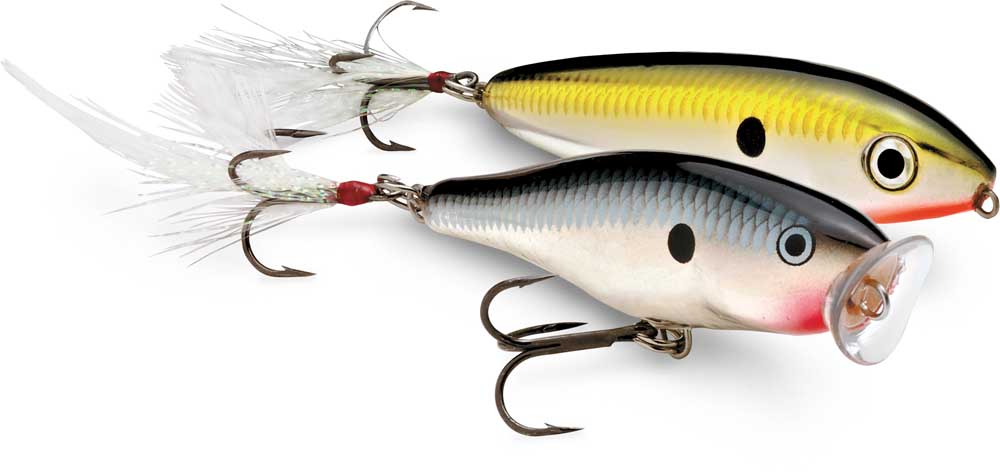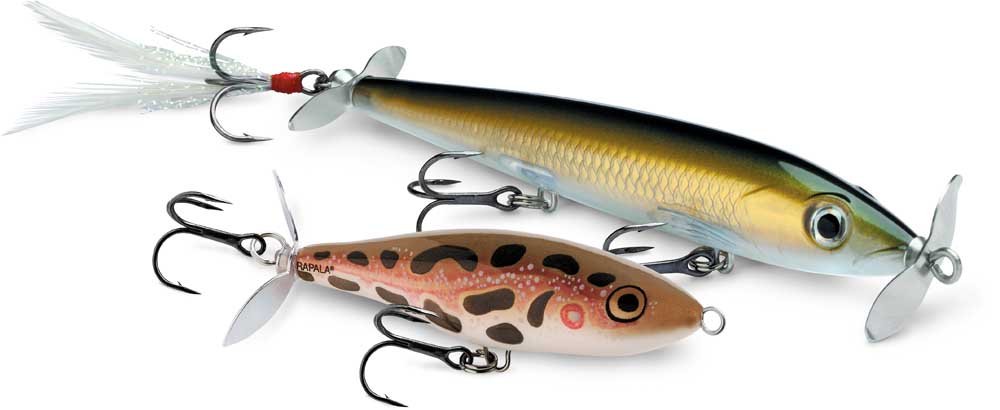In the last installment of “Pro Spective,” I shared a few tips on how to develop proper cadence for jerkbaits, the focus of which was on how and when to move the lure.
Well, with this entry I’d like to discuss how those same basic concepts apply to topwater lures. Just like jerkbaits, it’s all in how you move the lure.
The Moment of Truth
When I conduct seminars on topwater fishing, I always talk about “The Moment of Truth” — the point at which a bass is poised beneath the lure and contemplating a strike. It’s the most crucial time in topwater fishing. In that instance, what you do or don’t do, ultimately determines the outcome.
Should you pause or should you move the lure? And if you do move it, then how much?
Normally, those questions can only be answered by the fish and time on the water. But that doesn’t mean there aren’t a few short cuts. To better understand this critical point in the retrieve, let’s consider the various groups of topwater lures and how it applies to each of them.
Depending on the type of topwater lure I’m throwing, I usually have a basic presentation in mind … at least to start with. And I’ll always begin with that unless the conditions or the fish dictate otherwise.
Take poppers for instance. Let’s say I’m trying to catch bass during the shad spawn. Obviously, the first order of business is to locate the shad. Once that’s accomplished, then it’s a matter of keeping the lure in contact with them and using the right moves.

If the shad are tight against a rock bank, for instance, I’ll make certain the lure touches down right at the waterline. (You’d be surprised at how many instant hook-ups this can generate.) If I don’t get bit there, then I’ll start the retrieve by using short, steady pulls of the rod tip to make the lure spit and slide across the surface. And I’ll do this at a fairly brisk pace, pausing the lure only briefly between pulls. The spitting action emulates the tail flips of a shad on the surface perfectly, and it can drive bass crazy.
If that approach fails to produce, then I’ll slow the retrieve — popping or chugging the lure more, using longer pauses between pulls.
If I’m trying to draw fish from submerged cover, like grass or brush, I’ll usually begin with a much slower presentation, popping the lure a couple of times then letting it sit over or next to the target. And if I get a quick reaction from the fish, then I’ll take that as a cue to speed things up, using quicker pops with shorter pauses.
These moves with a popper aren’t guaranteed to work in every situation, but they are fairly reliable, and they provide a good place to start.
Now let’s say I’m using a prop bait. Then what?
Generally speaking, I’ll work prop baits slower most of the time. Yeah, there are occasions when I may want to move the lure more quickly, like when bass are schooling or when they’re actively feeding in thin, topped out grass. But those situations are usually reserved for smaller models featuring a single tail prop. I’m not sure why, but they seem to perform best in those types of scenarios.
When I’m throwing a larger model with tandem props, I use a relatively slow retrieve with lots of pauses. The presentation goes something like this; I cast to the target area, then let the lure rest for a few seconds. Once the ripples dissipate, I then give the lure two short pulls — just enough to get the props turning — and no more than six to 12 inches per pull. Again, I’ll let the lure sit. At that point I feel I’ve alerted any fish in the area to its presence. Then it becomes a waiting game, allowing the fish a chance to approach the lure.

Depending on how the fish responds, I’ll either give the lure a quick, short pull or let it lie motionless. One or the other will usually work, and it may take a fish or two to figure out which is best. Again, remember “the moment of truth.”
I couldn’t begin to count the number of bass I’ve caught by allowing prop baits to lie stationary. Even when they’re not in motion, there’s something about their profiles and the slightest movement of the props that incite bass to strike — especially when there’s a light ripple on the surface.
Walking baits are another matter. Those I usually move steadily, walking them from side to side across the surface. Sure, there are times when an occasional pause can make a difference. But I first want to determine the right speed or rhythm of the walk and how far to let the lure glide in each direction. It’s those two aspects of the retrieve that often make a huge difference.
Once I’m comfortable with the rhythm, then I’ll try pausing the lure at key points during the retrieve — like near standout targets, such as a stump, boulder, laydown or clump of grass. I learned a long time ago that by walking the bait up to these types of objects, then pausing it, bass are somehow forced to react — big ones, too!
Surface Lure Summary
Some days bass will explode on a topwater as soon as it hits the water. Other days it may take pauses of up to a minute or more to make them bite. Much of that will be determined by the conditions and the species of bass you’re after. Smallmouth are usually the quickest to take a topwater. But that doesn’t mean spots and largemouth are far behind. They, too, can provide quick and explosive topwater action. And that’s part of the fun — figuring out what each will bring on any given day.
Only patience and perseverance, along with the skills to present each type of topwater correctly will bring consistent results. But one thing is certain, if you do things right, you could easily fool the biggest fish in the lake.
Big bass love topwaters! It’s just that simple.





